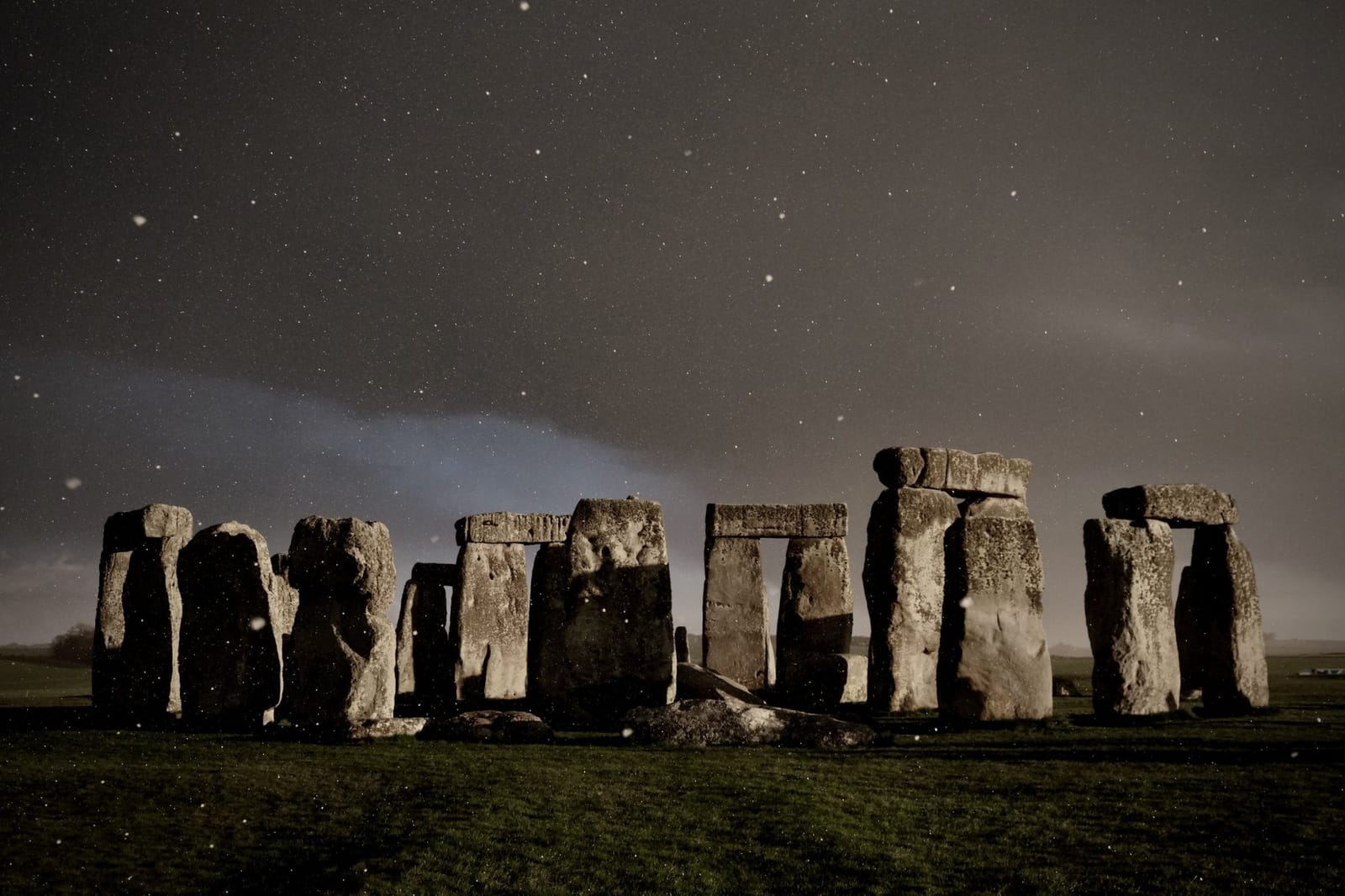London. A chilly Saturday with fast-moving clouds and confusing bursts of snow while the sun shines. The sun goes down at 7:35pm. On the Tube, a woman thumbed through a large book called Solar Power Financing Without the Jargon. A few seats down, a kid in bright red sneakers held a book called Finding God while he scrolled through his phone. I understand that.
C. and I tagged along on a high school field trip to Stonehenge. It was our first time beyond London, and I was eager to see some foreign terrain. But the landscape looked like Ohio or Pennsylvania, and the motorway felt like any American highway, except backward. My disappointment shifted to a specific flavor of reassurance as I watched the familiar blur of concrete pylons, jersey barriers, and breakdown lanes: the universal grammar of our strange human project.
Stonehenge appeared on the horizon, and, like the Mona Lisa, it was smaller than I thought. All the photographs I’d seen since childhood had led me to believe it was larger than life. Strange how an image can both amplify and diminish reality. A photo display at the visitor’s center included a 1970s snapshot of a little boy with a quote that would be an excellent first sentence for a novel: “This is me, age 2, climbing on Stonehenge in a cape, carrying a shovel and a gun.”
You can’t climb on Stonehenge anymore, but you can walk around it under the eye of a tour guide and two uniformed guards. Some people said they felt a shift in their energies and auras as they stepped into the ring of jumbled stones, and I wished like hell I believed in such things. If I have an energy field, it’s probably something like television static.

As the tour guide described the lifestyles of hunter-gatherers and the effects of solstices, I got very tired and wanted to lean against one of those stones—but you’ll go to jail if you touch anything. It’s not like the 1970s when people used Stonehenge for picnics, sex, and sacrifices while their children scampered around with toy weapons. Maybe those were better days.
I had no idea Stonehenge was plopped next to a highway, but I admired the juxtaposition of truck traffic framed by prehistoric stonework, a beautiful collision of prehistoric and modern engineering. What relics from our world will people marvel at four thousand years from now? Will children in the year 6022 be clambering over the bones of a shopping mall or superstore?
Many of the stones have fallen over the centuries. They sink into the grass, covered in lichen. Maybe we should tidy the place up and move them back to where the Druids or Martians put them—it’d be a sign of respect. Then the wind began to howl, the blue sky turned a mean grey, and sheets of snow whipped across the scene. It felt like static had descended upon this ancient site, and for a moment, I think I felt some energy.





